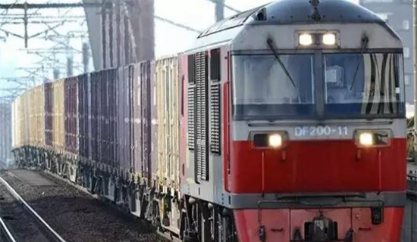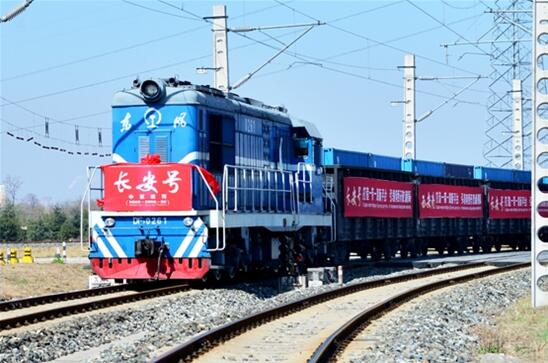By Qian Ding, CNTV Panview editor
The world is getting smaller thanks to the fast development of transportation modes. We can almost get to any place within hours if condition allows for it. Developed transportation is one of the keys to globalization and Beijing knows it well. By expanding railway infrastructure and networks, China expects to boost trade as its export rates have recently slowed down.
The first freight train traveling all the way from eastern Chinese city, Yiwu, Zhejiang to London has set off on January 2. China Railways Cooperation said the journey will cover a staggering 7,456 miles and pass through nine countries, including Kazakhstan, Russia, Belarus, Poland, Germany, Belgium and France.

Yiwu is recognized for its small commodity trade and vibrant markets. Accordingly it’s not surprising the train from Yiwu to London is laden with goods valued at over 4 million euros, including socks and suitcases. As reported by Bloomberg, the train can carry 200 shipping containers, compared to 20,000 aboard a large cargo vessel. The train trip only takes about 18 days to reach London while a large cargo vessel will need about a month to arrive at the same destination.
Additionally, a freight train loaded with 200 tonnes of flaxseed cake, a type of cattle feed, departed from Erenhot in Inner Mongolia, China for Rotterdam in Netherlands on Nov. 28, November.
On November 20, a freight train service linking Inner Mongolia with Kazakhstan started operations.
In September, a cargo train carrying machinery, home appliances, garments and electronic equipment left Xi’an, capital of northwest China’s Shaanxi Province bound for Hamburg, Germany. Other Chinese cities such as Chengdu, Chongqing have also launched rail freight services to expand trade with Europe and central Asia in recent years.

Chinese President Xi Jinping proposed the ‘ Belt & Road ’ initiative in 2013 as part of a strategy to strengthen trade by expanding railway networks to enhance interconnectivity en route.
As a global hub for manufacturing, the largest manufacturing economy, as well as the largest exporter of goods in the world, China’s economy remains reliant on industries and exports. The expansion of rail routes is beneficial for trade, but how does China make the best use of its routes? Selling low-tech small commodities produced in sweatshops doesn’t sound smart anymore. The roads are there, yes, but it’s the quality and brand that appeals to global customers. Compared with building railroads on earth, the ways to reach the hearts of the people appear to be more sophisticated.
Some have suggested that in order to maintain sustainable economic growth, China should shift to a more advanced development with high technology and low carbon emissions, which stands in accord with the planning goals of Beijing’s five development concepts: innovation, coordination, green development, opening up and sharing, for its 13th Five-Year Plan. Good things don’t come easy, but with more effort, dreams might come true.
( The opinions expressed here do not necessarily reflect the opinions of Panview or CCTV.com. )

Panview offers a new window of understanding the world as well as China through the views, opinions, and analysis of experts. We also welcome outside submissions, so feel free to send in your own editorials to "globalopinion@vip.cntv.cn" for consideration.















